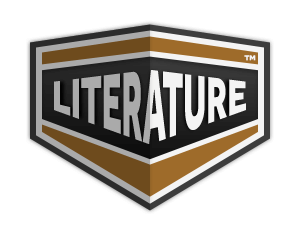How Thanksgiving Came
"How Thanksgiving Came" by Elizabeth Gordon is a charming children's book that explores the origins and customs of the Thanksgiving holiday. Through engaging storytelling and vivid illustrations, the book presents the history of Thanksgiving, highlighting the significance of gratitude, family, and community. It introduces young readers to the Pilgrims' journey, their interactions with Native Americans, and the traditions that have shaped modern Thanksgiving celebrations. With a focus on the themes of sharing and appreciation, the book serves as both an educational and heartwarming read for families during the festive season.
“Gobble, gobble, gobble,” said Mr. Turkey Cock proudly spreading his wonderful turkey tail fan and looking as pompous as no one but he can look. “Oh, you funny, conceited bird,” said the boy named Billy, “you won’t be so noisy next Thursday when we have you for Thanksgiving dinner. But that reminds me--won’t somebody please tell me why the turkey is called our National bird? I thought it was the eagle. And why do we always have Thanksgiving Day on Thursday?” “Well, you see, Son,” said Somebody, “it started this way. As you of course know, our Pilgrim Fathers and Mothers came over in the Mayflower and landed on Plymouth Rock on November 21st, 1620; just one hundred and two brave souls in a strange land, full of strange people who might well resent their being there. Although it was late in the year and cold weather, they managed to build themselves houses of a sort; but with the best that they could do more than half of them perished that first terrible winter. “When Spring came, those who were left, with the help of the Indians, bravely planted the crops and started to make a home in the wilderness. The Indians gave them corn for seed and taught them how to plow the land and fertilize it, and with the seed that they had brought with them they managed so well that when harvest time came they had a bountiful yield. To express their gratitude to God who had so marvelously prospered them, as well as to show their friendliness to the Indians, Governor Bradford issued a proclamation to the effect that they would have a Thanksgiving feast to which Chief Massasoit and his braves were to be invited, which should last from Thursday morning until Saturday night. That was in October, 1621. “But the Pilgrim Mothers, remembering the harvest festivals of England, with the barbecued sheep and oxen which they used to have, said ‘How can we make a feast? We have no meat.’ ‘Meat,’ said Governor Bradford, ‘why the woods are full of it.’ So he sent four of his very best riflemen out into the forest for wild turkeys, and they brought back so many that there was enough meat for the three days feasting for the colonists and their guests, the Indians. And ever since then no Thanksgiving feast could be really right without a nice plump turkey.” “Did the Indians like the feast?” asked the boy named Billy. “Indeed they did,” said Somebody; “they liked it so well that Chief Massasoit sent his young men back with a gift of nice fat deer which they had shot especially for the colonists. Chief Massasoit wanted to show Governor Bradford that the Indians knew how to play fairly.” “So that’s how Thanksgiving became,” said the boy named Billy. “Yes,” answered Somebody, “but it was a long time after that before it became the good old holiday that we know now. “In the first year of his office, President George Washington issued a proclamation recommending that November 26, 1789, be kept as a day of “national thanksgiving” for the establishment of a form of government that made for safety and happiness. After that, it was only held at odd times, but in 1863 it became a National holiday and the last Thursday in November is always proclaimed by the President as a day of prayer and thanksgiving.” “We’re going to have the whole family here for dinner this year,” said the boy named Billy; “and we’re going to have turkey and cranberry jelly and pumpkin pie ’n’ everything.” “Gobble, gobble, gobble,” remarked Mr. Turkey Cock. “We shall!” remarked the boy named Billy, laughing.
Translation
Translate and read this book in other languages:
Select another language:
- - Select -
- 简体中文 (Chinese - Simplified)
- 繁體中文 (Chinese - Traditional)
- Español (Spanish)
- Esperanto (Esperanto)
- 日本語 (Japanese)
- Português (Portuguese)
- Deutsch (German)
- العربية (Arabic)
- Français (French)
- Русский (Russian)
- ಕನ್ನಡ (Kannada)
- 한국어 (Korean)
- עברית (Hebrew)
- Gaeilge (Irish)
- Українська (Ukrainian)
- اردو (Urdu)
- Magyar (Hungarian)
- मानक हिन्दी (Hindi)
- Indonesia (Indonesian)
- Italiano (Italian)
- தமிழ் (Tamil)
- Türkçe (Turkish)
- తెలుగు (Telugu)
- ภาษาไทย (Thai)
- Tiếng Việt (Vietnamese)
- Čeština (Czech)
- Polski (Polish)
- Bahasa Indonesia (Indonesian)
- Românește (Romanian)
- Nederlands (Dutch)
- Ελληνικά (Greek)
- Latinum (Latin)
- Svenska (Swedish)
- Dansk (Danish)
- Suomi (Finnish)
- فارسی (Persian)
- ייִדיש (Yiddish)
- հայերեն (Armenian)
- Norsk (Norwegian)
- English (English)
Citation
Use the citation below to add this book to your bibliography:
Style:MLAChicagoAPA
"How Thanksgiving Came Books." Literature.com. STANDS4 LLC, 2025. Web. 22 Feb. 2025. <https://www.literature.com/book/how_thanksgiving_came_5164>.








Discuss this How Thanksgiving Came book with the community:
Report Comment
We're doing our best to make sure our content is useful, accurate and safe.
If by any chance you spot an inappropriate comment while navigating through our website please use this form to let us know, and we'll take care of it shortly.
Attachment
You need to be logged in to favorite.
Log In